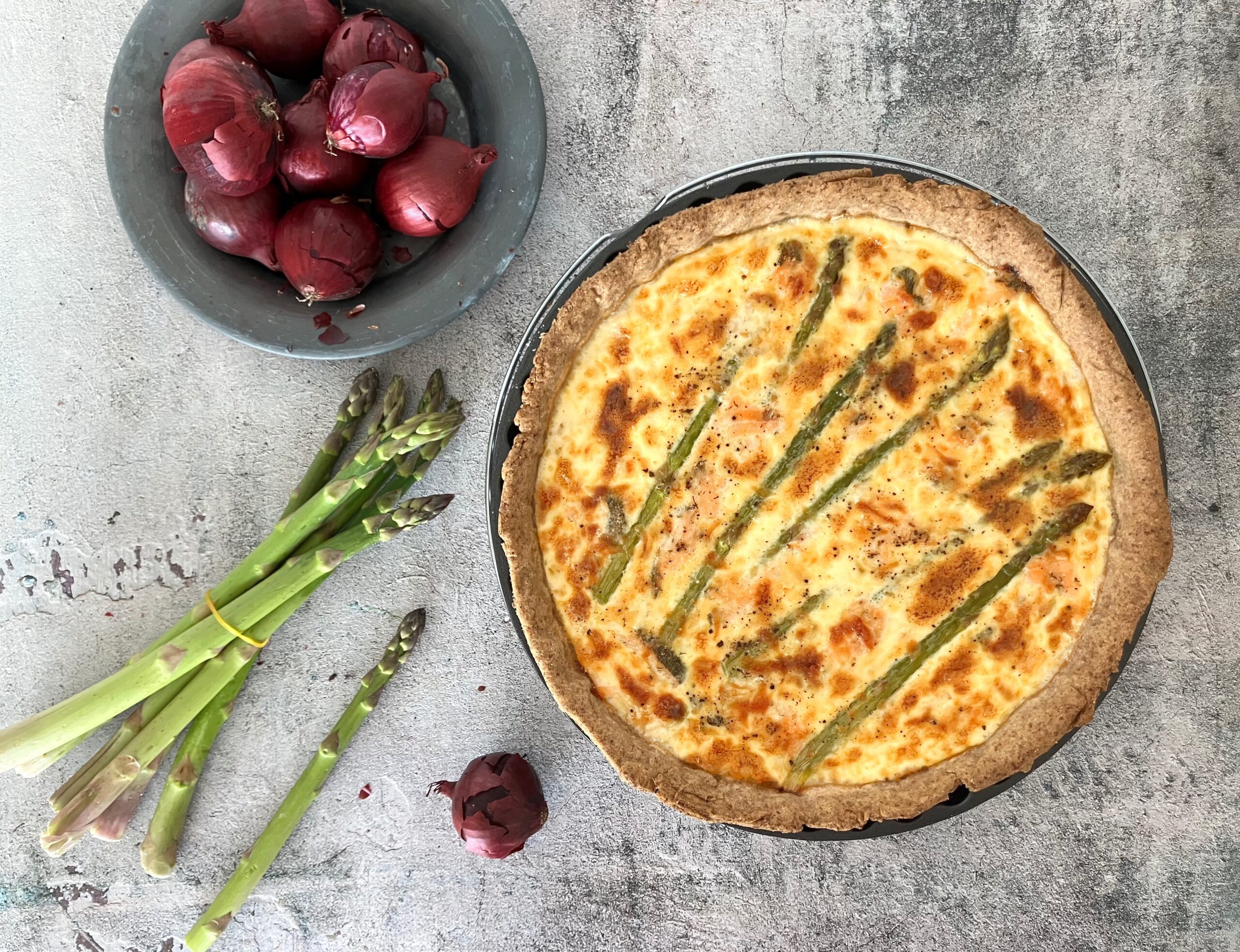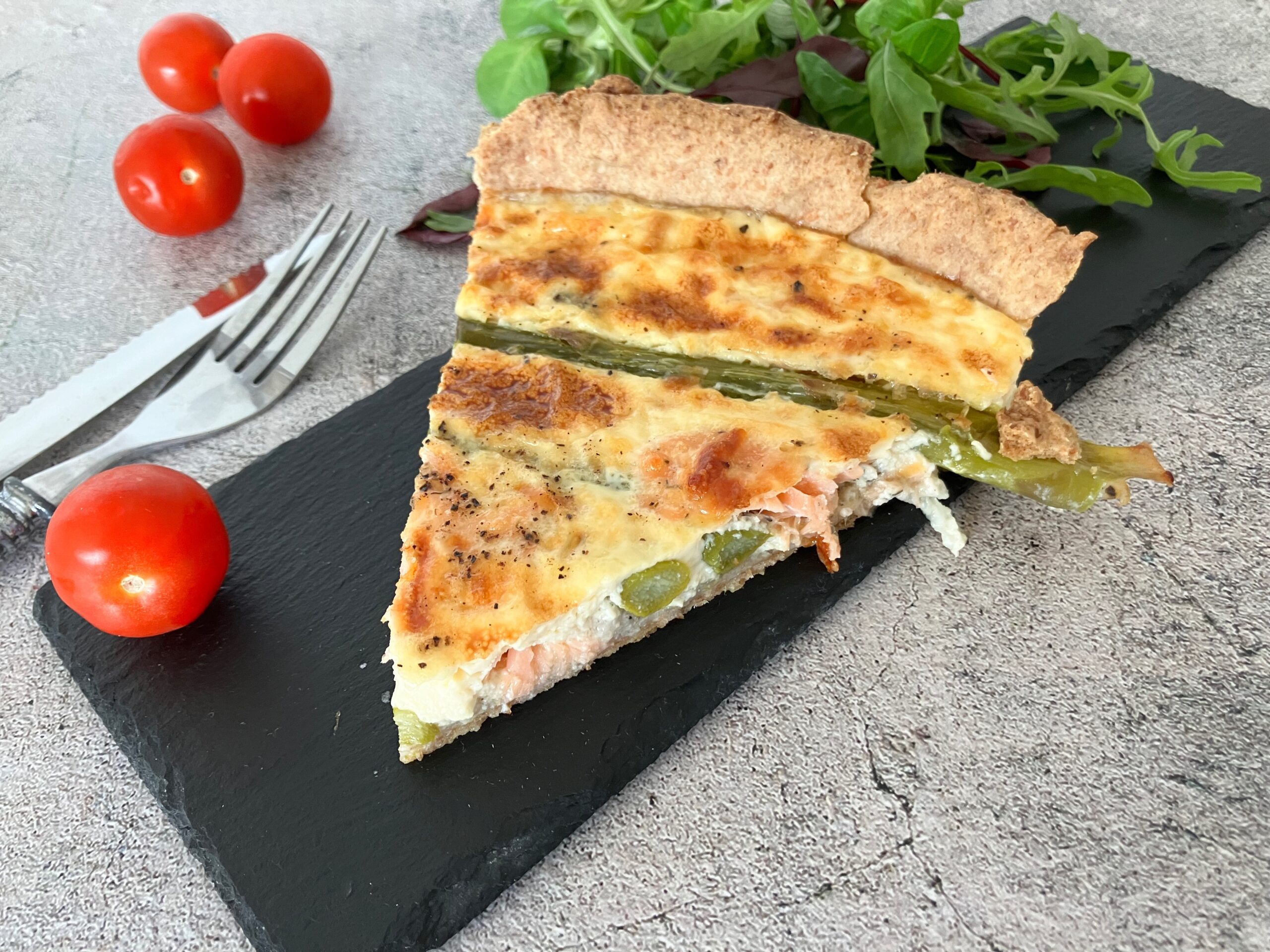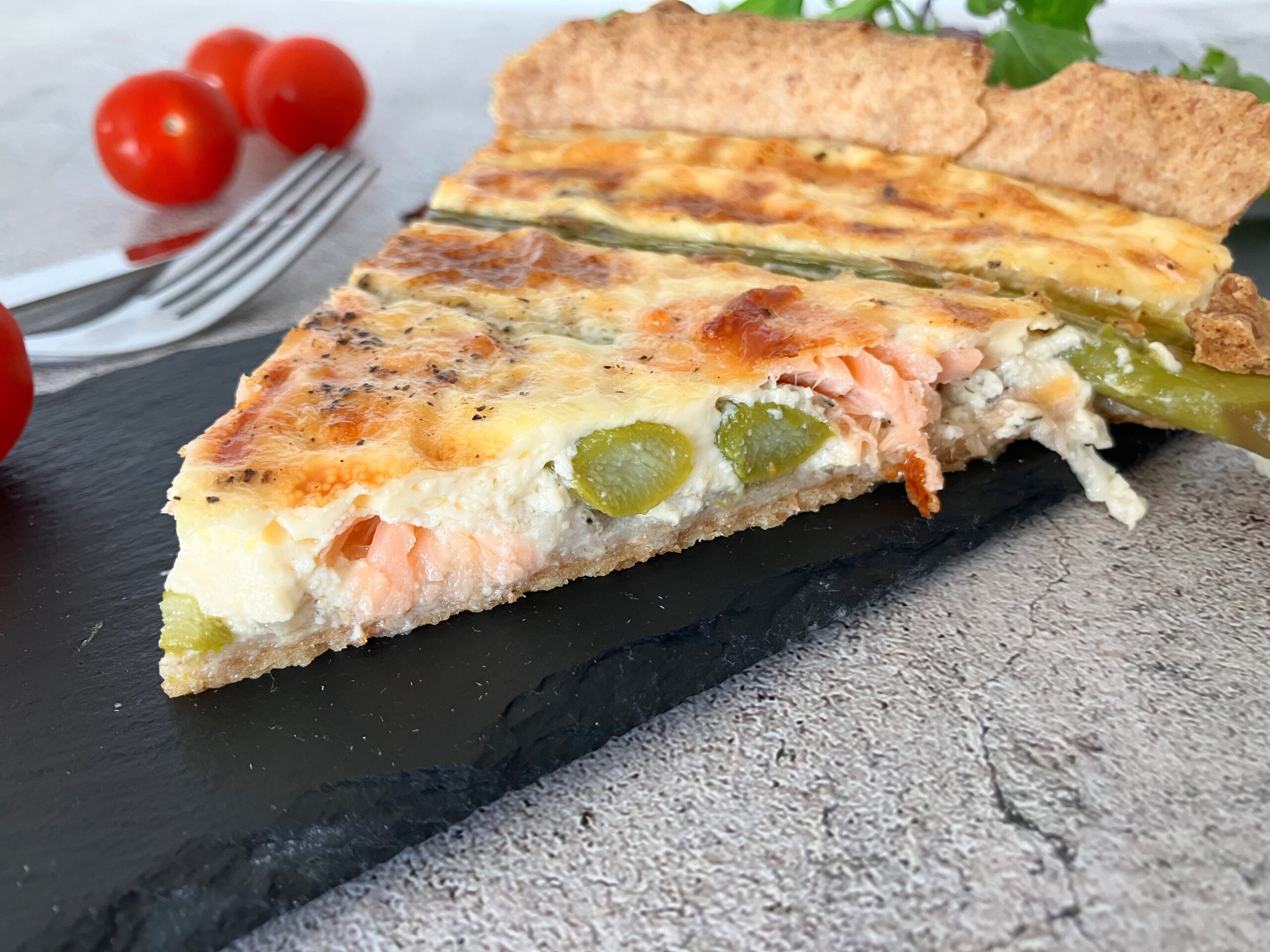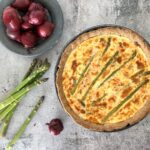Salmon and Asparagus Quiche with a Spelt Crust
This smoked salmon and asparagus quiche has an air of luxury about it. Don’t you think? With a homemade spelt crust and creamy filling, this dish is perfect for everything from a summer’s day picnic to a New Year’s Eve party favourite.
If you are new to spelt flour and would like to know more, please check out my tutorial: The Beginner’s Guide to Spelt Flour.
I’m in the Amazon Associates program, and some of the links in this post are affiliate links, which means I may earn a small commission if you click and buy. Please read my disclosure and privacy policy for more information.
_____________
|
|
| The difference between gravad lax, lox and smoked salmon |
| Substitutions for salmon and asparagus |
| Homemade spelt crust |
| Spelt flour galettes |
| More delicious spelt pastry recipes |
The difference between gravad lax, lox and smoked salmon
Salmon, in general, is one of my most favourite things to eat. Luckily, I live in Sweden, where is a prized ingredient.
The Swedish word for salmon is lax, and there are many different ways to enjoy it. This quiche contains gravad lax (sometimes referred to as gravlax), which is cured salmon, and very popular across the Nordic countries. The name comes from the Swedish att grava, which describes the ancient process of preserving fish with sugar or salt.
The salmon is cured with salt, sugar, dill and sometimes Aquavit (a strong white spirit often with the taste of caraway and/or dill). Although using salt to preserve fish is as old as the hills, you can make a simple, modern day version. Simply coat fresh salmon with the curing ingredients, and then pop in the fridge for a couple of days.
Although often confused with smoked salmon, gravad lax is not smoked. And if you are familiar with New York bagels, you will have undoubtedly heard of lox, which appears to be very similar to gravad lax, but without the sugar (and Aquavit).
Substitutions for salmon and asparagus
Although at first sight, ingredients like salmon and asparagus may seem expensive, in my case for this recipe, not so much. The smoked salmon had been bought on special offer (because it was nearing its expiry date), and the asparagus is coming into season and plentiful (which means cheaper). I wouldn’t say I was a skinflint, but I am not extravagant. If you can get produce on special offer (or in season) you can make fairly fancy food without a huge price tag attached.
However, you could easily make this quiche with prawns, ham, or even chicken. I have never had a chicken quiche. Is there even such a thing? As a replacement for asparagus, you could use peppers, mushrooms or just add more onion. Quiche is a pretty adaptable dish, so just add whatever you fancy.
Homemade spelt crust
I’ve talked a lot on the blog about my love of spelt flour. How it makes a very easy substitute for regular flour, especially in cakes. However, pastry is probably where it does its best job. Especially if you use wholemeal spelt flour. The nutty flavour shines through and is so delicious. Although wholemeal flour in general can made a denser crust, when filled with a soft filling like quiche, it is a pairing made in heaven. This salmon and asparagus quiche has a crust with a combination of white and wholemeal spelt, but I used all wholemeal spelt in this wholemeal spelt bacon quiche.
Making a homemade quiche from scratch can seem a little daunting. Especially the homemade pastry. Don’t be put off, though. Even without any real culinary expertise, I am sure you could easily whip up your own. Yes, it is a little more time intensive than buying your own ready made, but well worth it.
Spelt flour galettes
If making a quiche is perhaps pushing you out of your comfort zone a little (and I get it), maybe try a galette, first? There is no worrying about having to accurately roll out the pastry, or bake it blind. Galettes involve nothing more strenuous than rolling the pastry out a little, filling it, then turning over the edges in a very rustic style. Just like I did for my cheese and red onion galette.
I also love sweet pastry, too. I just take my base recipe for pastry and then add a little sugar. It worked so well for my caramel pecan spelt galette and strawberry galette.
Salmon and Asparagus Quiche with a Spelt Crust
Ingredients
Pastry:
- 100g (⅚ cup) wholemeal spelt (see note 1)
- 80g (⅔ cup) white spelt (see note 1)
- 80g (¼ cup + 2 tbsp) butter (cold and chopped into chunks)
- 1 tsp salt
- water (as much as needed)
Filling:
- 1 tbs butter
- 1 tbs olive oil
- 1 red onion (medium-sized)
- 1 tsp minced garlic (see note 2)
- asparagus (6-8 stalks)
- salt & pepper (to taste)
- 2 eggs (medium-sized)
- 250ml (1 cup) cream
- 100ml (¼ cup + 3 tbsp) milk
- black pepper
- 100g (3½ oz) gravad lax (see note 3)
- mozzarella (a touch for sprinkling).
Instructions
Pastry:
- Add the flour, butter and salt to a stand-mixer (see note 4).
- Work the ingredients together until you are left with a coarse breadcrumb texture. It is okay if you have larger chunks of butter remaining.
- Add one tablespoon of cold water. Allow it to combine with the dry ingredients, and very gradually add more as necessary. I usually need to use 3-4 tablespoons, but it can vary, depending on the flour used.
- The dough is ready when it pulls together and has a very slight tackiness to it.
- Form into a rough ball, cover with clingfilm, and place in the fridge for about 15-30 minutes.
- Pre-heat the oven to 190℃ / 375℉.
- When ready, roll out the pastry into a rough circle, and place in an oven dish (see note 5). Trim any edges.
- Cover with baking paper and line with rice or dried beans. Spread them out towards the edges, as this will hold the pastry in shape (see note 6).
- Bake for ten minutes.
- Take out of the oven, and remove the baking paper and rice/beans.
- Turn the oven down to 175℃ / 350℉ and place the pie crust back in the oven to bake for a further five minutes.
Filling:
- Heat the olive oil and butter in a frying pan.
- Slice the red onion, and fry for a few minutes until softened.
- Add the garlic and cook for a further minute.
- Add the asparagus and cook for just a couple of minutes, until their colour becomes just a touch darker.
- Using a slotted spoon, remove the ingredients from the pan and place on a paper towel. Allow them to cool a little.
Assembly:
- When the crust is ready, add an even layer of the onions to the bottom.
- Arrange the asparagus over the top.
- Whisk together the eggs, cream and milk.
- Pour the liquid over the onions and asparagus.
- Tear the salmon into strips and place it in any spaces between the asparagus stalks. Push some down under the liquid's surface a little.
- Give a generous sprinkling of black pepper, and finally, a little mozzarella (if using).
- Bake for 40 minutes. The quiche is ready when the top feels fairly firm to the touch, and it is no longer jiggling. Leave for around 10 minutes and then eat warm. Enjoy!
Notes
- You don't need to use spelt flour. Regular, or even gluten free, can be used as a replacement (totalling 180g - 1½ cups). You can also adapt the ratio of white/wholemeal flour.
- I use ready minced garlic. If this is not available to you, crush two cloves instead.
- See my main post for more information. I used thinly sliced cured salmon, but you could use ready cooked salmon (leftovers, for example).
- If you prefer, you can use the rub-in method to prepare your crust.
- My pie dish is 27cm in diameter, with a depth of 3cm / 1¼". The filling reached about ¾ of the way up the inside of the crust before being baked.
- It is always advised to blind bake a crust that is going to have a wet filling. If you are not familiar with the process, there is a link in the main post. I use rice to blind bake, but you can use dried beans or even specially made blind baking beans.







